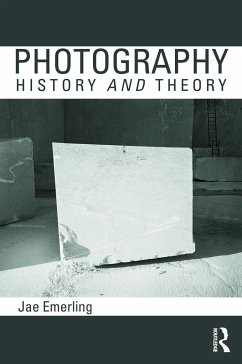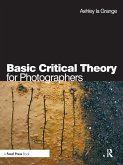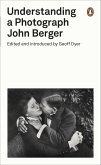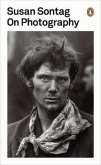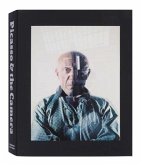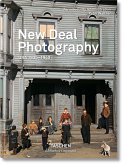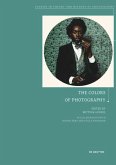Photography: History and Theory introduces students to both the history of photography and critical theory.
From its inception in the nineteenth century, photography has instigated a series of theoretical debates. In this new text, Jae Emerling therefore argues that the most insightful way to approach the histories of photography is to address simultaneously the key events of photographic history alongside the theoretical discourse that accompanied them.
While the nineteenth century is discussed, the central focus of the text is on modern and contemporary photographic theory. Particular attention is paid to key thinkers, such as Baudelaire, Barthes and Sontag. In addition, the centrality of photography to contemporary art practice is addressed through the theoretical work of Allan Sekula, John Tagg, Rosalind Krauss, and Vilém Flusser. The text also includes readings of many canonical photographers and exhibitions including: Atget, Brassai, August Sander, Walker Evans, The Family of Man, Diane Arbus, Lee Friedlander, Cindy Sherman, Bernd and Hilla Becher, Sebastaio Salgado, Jeff Wall, and others.
In addition, Emerling provides close readings of key passages from some major theoretical texts. These glosses come between the chapters and serve as a conceptual line that connects them. Glosses include:
Roland Barthes, "The Rhetoric of the Image" (1964)
Susan Sontag, Regarding the Pain of Others (2002)
Michel Foucault on the archive (1969)
Walter Benjamin, "Little History of Photography" (1931)
Vilém Flusser, Towards a Philosophy of Photography (1983)
A substantial glossary of critical terms and names, as well as an extensive bibliography, make this the ideal book for courses on the history and theory of photography.
Hinweis: Dieser Artikel kann nur an eine deutsche Lieferadresse ausgeliefert werden.
From its inception in the nineteenth century, photography has instigated a series of theoretical debates. In this new text, Jae Emerling therefore argues that the most insightful way to approach the histories of photography is to address simultaneously the key events of photographic history alongside the theoretical discourse that accompanied them.
While the nineteenth century is discussed, the central focus of the text is on modern and contemporary photographic theory. Particular attention is paid to key thinkers, such as Baudelaire, Barthes and Sontag. In addition, the centrality of photography to contemporary art practice is addressed through the theoretical work of Allan Sekula, John Tagg, Rosalind Krauss, and Vilém Flusser. The text also includes readings of many canonical photographers and exhibitions including: Atget, Brassai, August Sander, Walker Evans, The Family of Man, Diane Arbus, Lee Friedlander, Cindy Sherman, Bernd and Hilla Becher, Sebastaio Salgado, Jeff Wall, and others.
In addition, Emerling provides close readings of key passages from some major theoretical texts. These glosses come between the chapters and serve as a conceptual line that connects them. Glosses include:
Roland Barthes, "The Rhetoric of the Image" (1964)
Susan Sontag, Regarding the Pain of Others (2002)
Michel Foucault on the archive (1969)
Walter Benjamin, "Little History of Photography" (1931)
Vilém Flusser, Towards a Philosophy of Photography (1983)
A substantial glossary of critical terms and names, as well as an extensive bibliography, make this the ideal book for courses on the history and theory of photography.
Hinweis: Dieser Artikel kann nur an eine deutsche Lieferadresse ausgeliefert werden.
'Jae Emerling has done the near impossible: he has written an introduction to the history and theory of photography that also adds significantly to the ways in which we come to see, know, and understand the world. Here, by focusing on the 'and' between history and theory, photography itself becomes ingeniously a form of thinking. Photography is history, is theory, is technology, is archive, is document, is truth, is time, is knowledge, is a way to generate new worlds politically and aesthetically. Emerling writes that 'to study the history and theory of photography is to write and create alongside-and in the middle of-images.' He couldn't be more right.' - Marquard Smith, Director, Institute for Modern and Contemporary Culture, University of Westminster, UK
'Jae Emerling has produced a timely and thoroughly useful book that shows how the history of photography and the theories encouraged by that history have shaped our experience of the photographic work of art. His writing eloquently and accessibly considers those debates that have lead to the concepts through which contemporary practitioners and viewers alike now confront the 'impossible object' of an art photograph. This book is a must for anyone serious about the production, appreciation, or use of photographic images in the 21st century. Emerling's work beautifully defines artistic practice and theory as complementary but not identical, and points out that images are always already ensembles of history and ideas. For as he so succinctly states in his introduction, 'The footprint of a bird is not a bird'.' - William Wylie, Professor of Art, University of Virginia, USA
'Photography offers the most complex limit case for understanding representation in our time. What Emerling has done in situating the discourse of art photography on the dual thresholds of aesthetics/ethics and theory/history, is to open up the field to the ontological complexity of its subject domain. This book is an astonishing performance, a nuanced and lucid argument addressed to all those interested in why photography matters today.' - Claire Farago, Professor of Art History, University of Colorado at Boulder, USA
'In exploring photography's inexorable relationship to theory Emerling has produced an elegant and rigorous analysis of key theoretical junctures within the history of this crucial medium of visual culture... [T]his excellent study is likely to become an indispensible volume for graduate students and scholars of photography and those interested in theories of visual culture. Highly recommended.' - M.R. Freeman, CHOICE magazine
'...we are now witnessing the publication of more single-voiced books [that] succeed in adding new perspectives and insights on photography, as Photography: History and Theory convincingly does' - Helen Westgeest, CAA reviews
'Jae Emerling has produced a timely and thoroughly useful book that shows how the history of photography and the theories encouraged by that history have shaped our experience of the photographic work of art. His writing eloquently and accessibly considers those debates that have lead to the concepts through which contemporary practitioners and viewers alike now confront the 'impossible object' of an art photograph. This book is a must for anyone serious about the production, appreciation, or use of photographic images in the 21st century. Emerling's work beautifully defines artistic practice and theory as complementary but not identical, and points out that images are always already ensembles of history and ideas. For as he so succinctly states in his introduction, 'The footprint of a bird is not a bird'.' - William Wylie, Professor of Art, University of Virginia, USA
'Photography offers the most complex limit case for understanding representation in our time. What Emerling has done in situating the discourse of art photography on the dual thresholds of aesthetics/ethics and theory/history, is to open up the field to the ontological complexity of its subject domain. This book is an astonishing performance, a nuanced and lucid argument addressed to all those interested in why photography matters today.' - Claire Farago, Professor of Art History, University of Colorado at Boulder, USA
'In exploring photography's inexorable relationship to theory Emerling has produced an elegant and rigorous analysis of key theoretical junctures within the history of this crucial medium of visual culture... [T]his excellent study is likely to become an indispensible volume for graduate students and scholars of photography and those interested in theories of visual culture. Highly recommended.' - M.R. Freeman, CHOICE magazine
'...we are now witnessing the publication of more single-voiced books [that] succeed in adding new perspectives and insights on photography, as Photography: History and Theory convincingly does' - Helen Westgeest, CAA reviews

